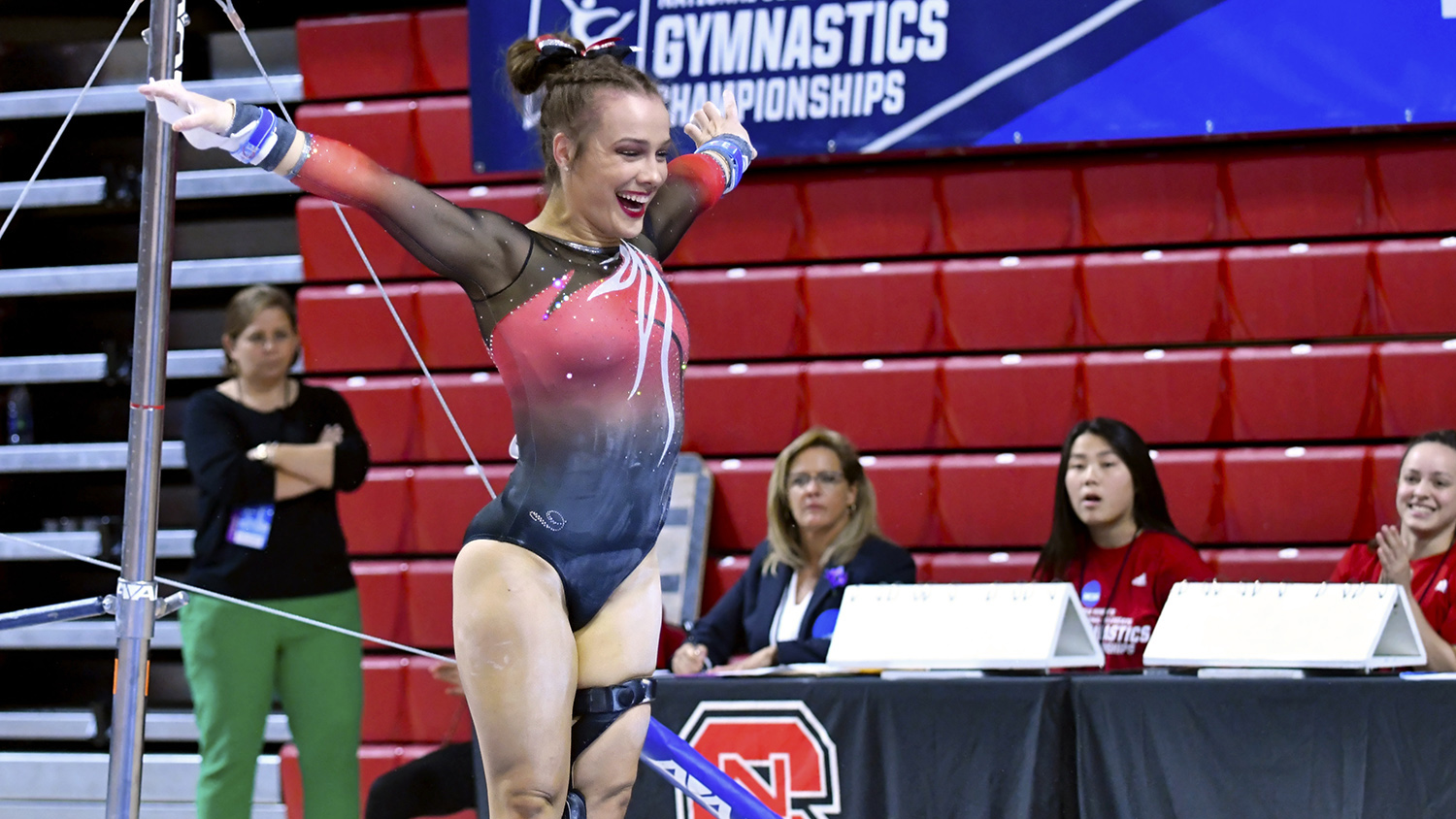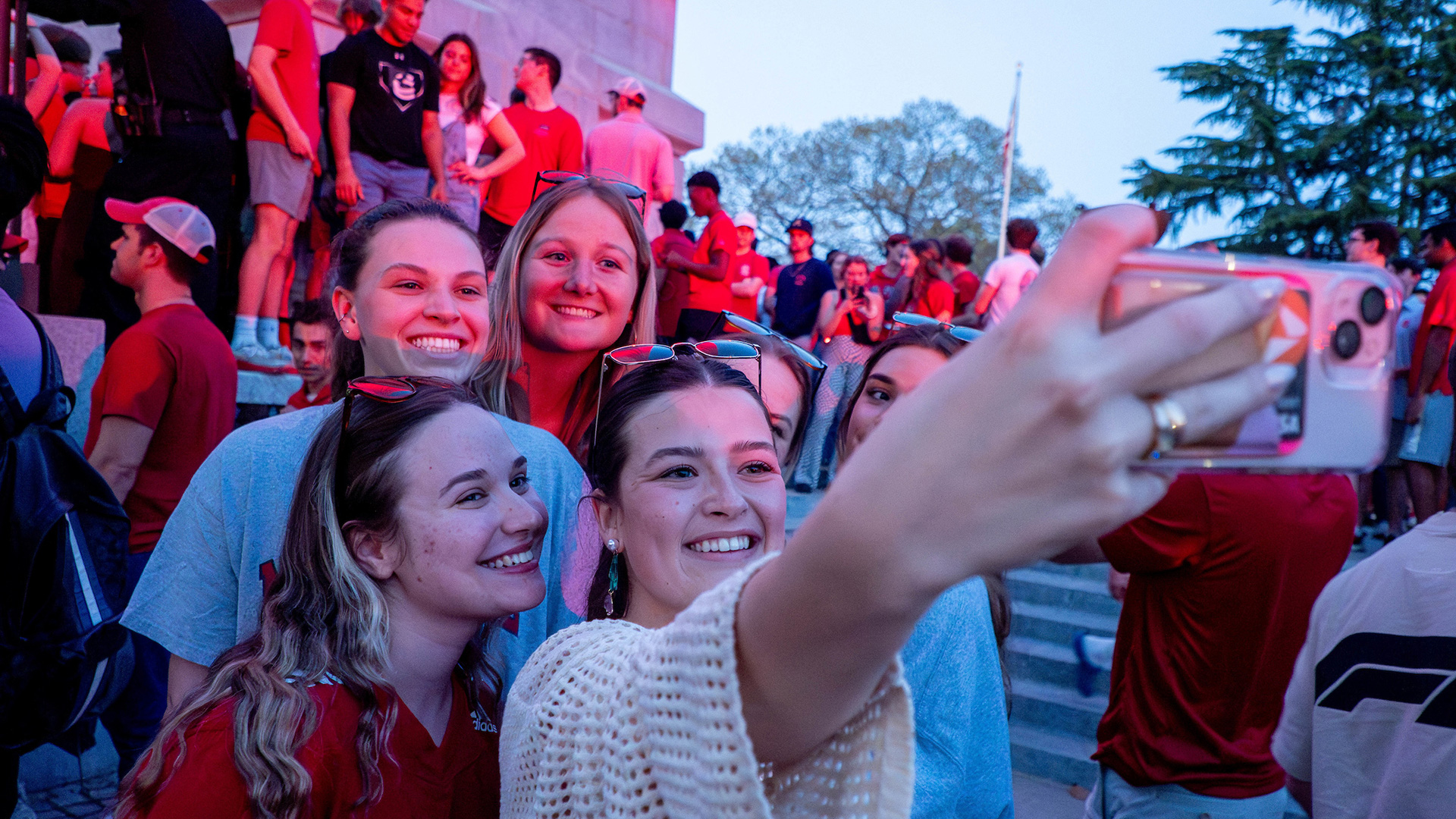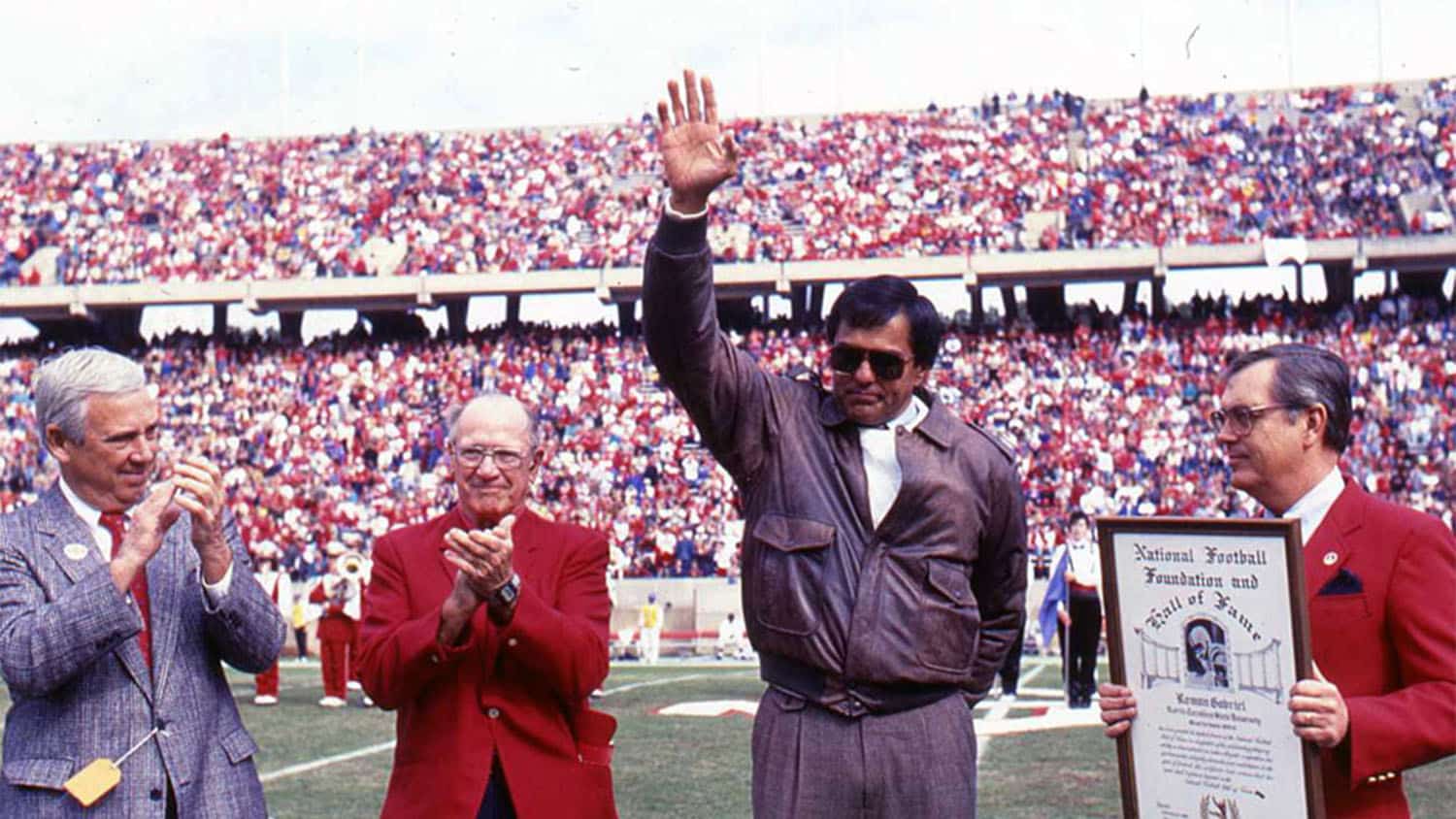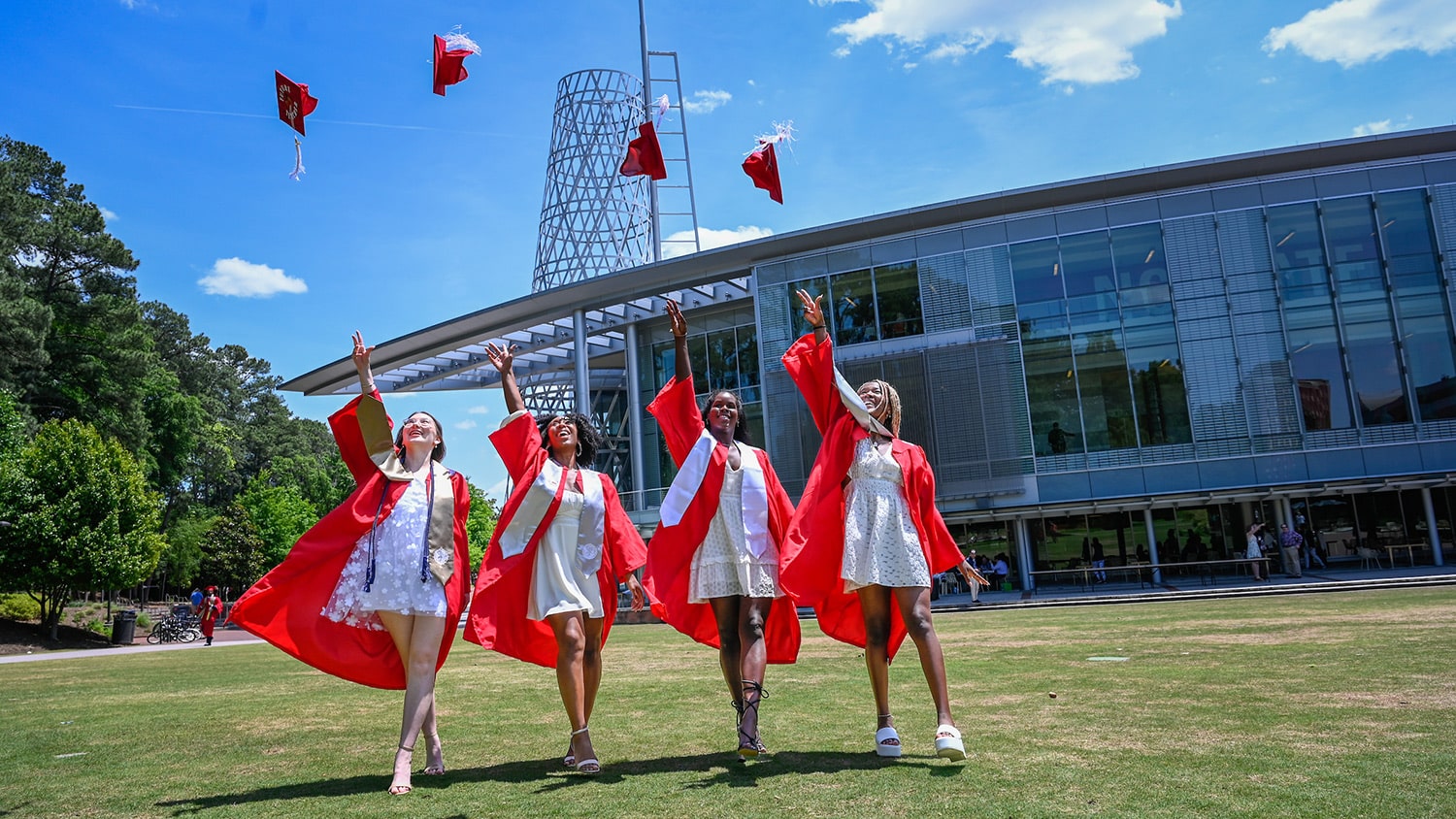Setting a High Bar

Maggie Tamburro got an early, albeit unusual, graduation present: a new anterior cruciate ligament in her left knee.
That might not show up on everyone’s congratulatory wish list, but for the former Wolfpack gymnast, it was a necessary procedure to prepare her for her new life as a medical school student.
The native of Hummelstown, Pennsylvania, will graduate Saturday with honors and a 4.0 GPA from the NC State-UNC joint biomedical engineering program and begin preparations to enroll at the University of Pennsylvania’s MD-Ph.D. program in the fall.
She hopes one day to find a way for other athletes to avoid the kind of repetitive motion injuries she suffered during her sophomore season with the Wolfpack that limited her participation throughout her college career.
Her first torn ACL injury happened during practice, on a routine maneuver she had successfully performed hundreds of times during her 17 years of competitive gymnastics.
“It was a very tough time for me,” Tamburro says. “I decided to concentrate on my school and rehabilitation.”
She had surgery to repair the injury, began rigorous rehabilitation and used a volunteer summer job at UNC Rex Hospital to take her mind off the pain in her reconstructed knee. After nine months off, she returned to the mats only to discover a new pain in her knee. An MRI revealed that her rebuilt ligament had not properly healed.
“The graft in the surgery did not take,” Tamburro says. “Going through rehab the first time was hard enough. I didn’t know about going through it all again.”
She had a choice: to have the surgery again or to compete only on uneven bars, the only of the four gymnastic events that doesn’t put great stress on the knees. Wearing a bulky brace on her injured leg, Tamburro competed throughout her junior season, contributing to a team that eventually won the Eastern Atlantic Gymnastics League title under first-year coach Kim Landrus. The team advanced to the NCAA Eastern Regional, where it finished a surprising third overall.
She competed on an ACL-less knee this past season, serving as a team leader. She even managed to do an exhibition beam routine, something she thought she would never do until her knee had been surgically repaired one more time.
Both seasons, she was named first-team all-conference on the bars. At the end of the season, she was named to an All-EAGL scholastic team for the fourth consecutive year and named the 2019 EAGL Scholar Athlete of the Year.
“She has the heart of a champion,” Landrus says. “To persevere and perform the way she is nothing short of remarkable.”
While her athletic career was somewhat limited by injury, Tamburro’s academic career was enhanced by it. As a junior, she joined Assistant Professor of Biomedical Engineering Jacque Cole’s orthopaedic mechanobiology research lab, focusing on regenerative medicine and rehabilitation engineering. It’s a field she hopes to explore after medical school.
“She is easily at the top of the undergraduate students I have worked with, and on par with many graduate students,” Cole says.
Tamburro co-designed a suspension system to study the effect of mechanical disuse on shoulder development that Cole called “ingenious.” She also developed a semi-automated technique to quantify muscle fibrosis, to help understand how muscle function is impaired by the most common nerve injury in children.
In addition to being a research assistant and student-athlete, Tamburro was an active campus leader as a University Honors Program Ambassador, vice president of the BME Honors Society and president of the Student-Athlete Advisory Committee.
She won two undergraduate research grants and the outstanding presentation award at the 2018 Undergraduate Research Symposium. She co-authored award-winning papers and abstracts, and later this month will deliver a research talk at the World Congress on Undergraduate Research in Oldenburg, Germany.
“Quite honestly, I have no idea how Maggie successfully manages so many commitments to the depth that she does, but her performance in BME and in my lab has been exemplary,” Cole says. “Her healthy perfectionism strikes a rare balance between high-quality work and high productivity.
“She has mastered the skill of strategic planning — developing goals each semester and planning each week to stay on track — which enables her to be efficient and effective with her time.”
- Categories:


